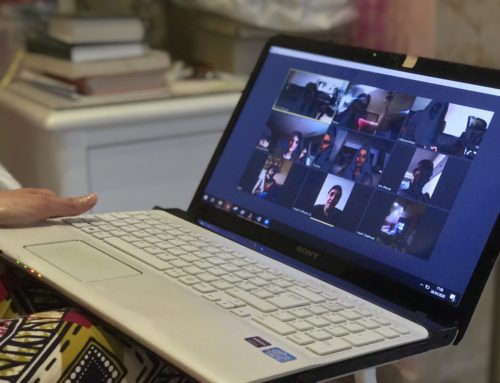 A positive newspaper editorial can bring a lot of value to nonprofits that are trying to drive action around a key issue, raise awareness, or generate support for their work.
A positive newspaper editorial can bring a lot of value to nonprofits that are trying to drive action around a key issue, raise awareness, or generate support for their work.
But if you haven’t worked for or with a newspaper in the past, you might wonder how it chooses what to write about and what positions to take in its editorials.
At most news organizations, those decisions are made by an editorial board — a committee of editors who meet regularly to discuss what’s happening in their communities and decide which topics to address in its editorials.
Often, editorial boards will invite outside experts to present information and take questions. Such meetings can be incredibly valuable in helping the board understand key issues and decide where it stands on these issues.
For nonprofit communicators who are charged with building and executing their organization’s media relations strategy, an audience with a newspaper’s editorial board can be an powerful tool.
It’s not a tool that you will have the chance to use regularly. But when you do, it can help put an entire newspaper’s voice behind you.
When to consider requesting a meeting
Because you’re unlikely to get more than one chance a year to meet with the editorial board of your local newspaper (and that’s being generous), you have to make it count.
This isn’t a card you want to play when you’re looking for people to come to your annual fundraising dinner.
I recommend requesting a meeting only when you’re launching a big initiative, such as a campaign to address a major issue in your community, or kicking off a new partnership that has the potential to make a big impact.
You might also request a meeting to introduce the board to a new top executive who wants to outline her agenda.
Making your request
Most news outlets will outline their process for requesting a meeting on their websites. In most cases, you can make a written request — either through a letter or email.
In your request, clearly state why you’re looking to meet with the board, the issue you’re hoping to discuss, and whom from your organization will represent you in the meeting.
You’ll also want to provide contact information and attach relevant supporting materials.
How to Prepare
If the editorial board grants your request for a meeting, your work is only just beginning.
Now, the challenge turns to preparing your leader for the hot seat.
Here’s how you can make sure he or she is ready for the conversation:
Understand the Ground Rules — If possible, find out how much time you’ll get with the board and determine whether the meeting is considered on-the-record or off-the-record. You can also find out how many people from your organization should be in the room during the meeting itself.
Do Your Homework — Determine who sits on the board and gather as much information as you can about the individual members. Read their bios. Study their recent coverage online. Follow them on Twitter and other social networks. Review recent editorials to see if you can determine what they value. If possible, talk to others who have met with the board to get their insights.
Prepare a Briefing — Create a written briefing for your leader that includes goals, key talking points, background about the board members, and logistical details about the meeting itself (where it will take place, whether it’s on or off the record, how long the meeting is scheduled for, etc.). This material helps the source prepare for the conversation. Learn more about creating an effective briefing.
Practice — Host a practice session with your representative to help him or her prepare. Rehearse your opening remarks that are focused on the key messages you aim to deliver and prepare to respond to potential difficult questions and counter arguments. Practice being as direct and quotable as possible — and make sure you’ve developed a coherent, compelling argument.
Make some news – In some instances, an editorial board meeting can present a two-for-one opportunity. Often a reporter or two will sit on the board, and if you can present some newsworthy information about a new initiative, new research, or a timely event, you may get a story and an editorial out of the deal.
Choose your leave-behinds — Determine what you want to leave with the members of the editorial board. It might be as simple as a fact sheet about the key issue or a more substantial packet that includes articles and research.
After the Meeting
Once the meeting is complete, there’s one last thing to do: send a thank you note.
A short, direct and compelling thank you is appropriate. So, too, is providing follow-up information that was requested during the meeting.
After that, however, it’s important to not overplay your hand. Rest your case and be available for follow-up questions, but try to avoid pestering the editors with questions about when the editorial might run.
Like most interactions with the media, you can only control so much of the process. Ultimately, the final product is in the board’s hands.
But if you take the steps outlined above, you’ll maximize your chances of getting a good result.





